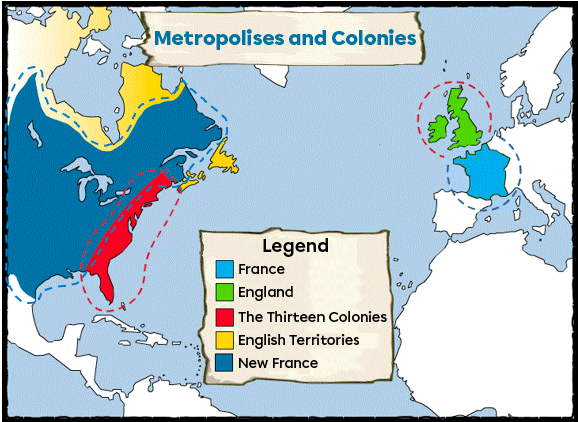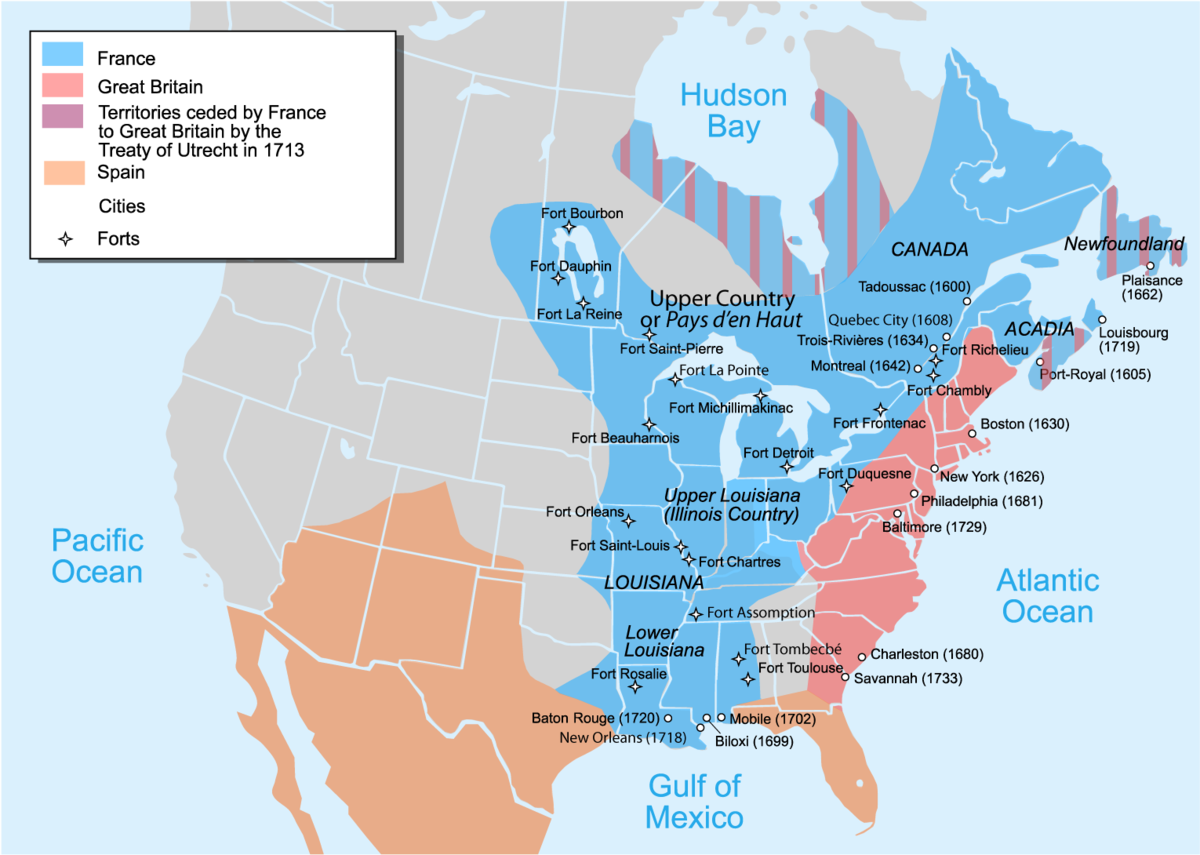France and England were both hungry for power and wealth in the 17th century, with large colonies around the world, particularly in America. These countries were said to have colonial empires.

With an equal interest in power and accumulating wealth, the colonies in America, or more specifically New France and the English colonies (the Thirteen Colonies), did not have peaceful relations. As they were under the control of their respective mother countries, the colonies had to wait for France and England to declare war so that they could, in turn, start an armed conflict—an intercolonial war.
France and England both wanted to control the fur trade and the fishing grounds of North America, notably clashing over the Hudson’s Bay and Newfoundland territories. The lucrative trades also caused rivalries between New France and the Thirteen Colonies.
The Thirteen Colonies, which were rapidly expanding in demographic and economic terms, wanted to extend their territory to the west, to settle on the fertile lands of Ohio. However, New France, which also occupied this territory, was a major hindrance to this expansion.
As a result, there was a considerable increase in tensions between New France and the Thirteen Colonies in the middle of the 1680s. At the end of the decade, France and England entered into war, which triggered the start of the colonial wars.
From 1707, England joined with Scotland to form Great Britain, so the habitants were then called the British.
From 1689 to 1748, three armed conflicts broke out in Europe: the War of the League of Augsburg, the War of Spanish Succession and the War of Austrian Succession. These three wars had few lasting impacts in North America. Only the signing of the Treaty of Utrecht, which brought an end to the War of Spanish Succession, had any territorial consequences.
The first conflict, the War of the League of Augsburg (1689–1697), triggered fighting in North America. New France attacked some villages of the Thirteen Colonies and tried to capture the trading posts around Hudson’s Bay and along the coasts of Newfoundland. The Thirteen Colonies laid siege to Quebec City with support from the Iroquoians, who broke their peace treaty with the French. This war ended with the signing of the Ryswick Treaty with no territorial changes as a result of this conflict.
The second conflict, the War of Spanish Succession (1701–1713), caused an intercolonial war centred on the control of Acadia and Newfoundland. In 1710, the British took possession of Port-Royal, in Acadia, and occupied the coasts of Newfoundland. This war ended with the Treaty of Utrecht, which had territorial consequences in North America.
During the third conflict, the War of Austrian Succession (1740–1748), France tried in vain to take back Acadia from the British. The British captured the important French town of Louisbourg, on Isle Royale. However, the French recovered Louisbourg at the end of the conflict, with the signing of the Treaty of Aix-la-Chapelle.
The Treaty of Utrecht of 1713 resulted in New France losing territory. Great Britain took Acadia, the land around Hudson’s Bay, as well as the coasts of Newfoundland. France kept Isle Royale (Cape Breton Island) and Isle Saint-Jean (Prince Edward Island).
These new British territories represented a substantial military and economic loss for France. As well as being rich in furs and fish, these territories were strategic positions for setting up British military forces. After this treaty, both France and Great Britain strengthened their defences, building forts and fortifying cities.

In 1754, a new war began between New France and the Thirteen Colonies, this time in North America: this was the start of the War of the Conquest. The conflict rapidly spread through the colonial empires outside North America. The Seven Years’ War between the two mother countries, France and Great Britain, began in 1756. The fight between the two big colonial empires became global, affecting Europe, the Caribbean, Africa and Asia.